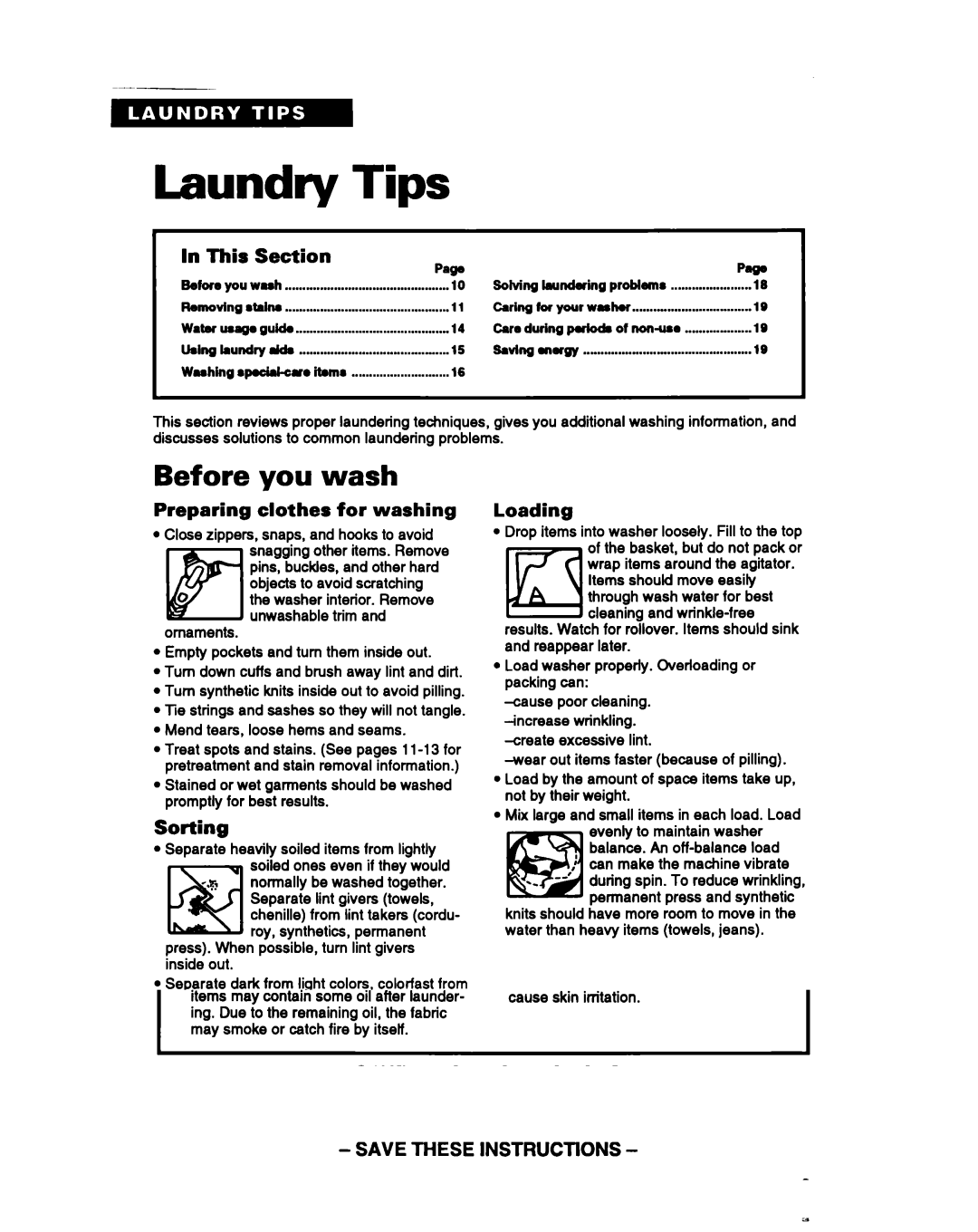
Laundry | Tips |
|
|
|
| ||
In This | Section | Pa* |
|
| ....................... | PW | |
Before | ...............................................you wash | 10 | Solving | laundering | problema | 16 | |
Removing | stalnm | 11 | caring | for your WNhu | 19 | ||
water | us- | gukb | 14 | Care during pub& | of | .19 | |
udng | bundry dda | 15 | 9avlng | nrgy | 19 | ||
Wmhing | l pociakuo itoma | 16 |
|
|
|
| |
This section reviews proper laundering techniques, gives you additional washing information, and discusses solutions to common laundering problems.
Before you wash
Preparing clothes for washing
lClose zippers, snaps, and hooks to avoid snagging other items. Remove pins, buckles, and other hard objects to avoid scratching the washer interior. Remove unwashable trim and
lEmpty pockets and turn them inside out.
l Turn down cuffs and brush away lint and dirt. l Turn synthetic knits inside out to avoid pilling.
lEe strings and sashes so they will not tangle. l Mend tears, loose hems and seams.
lTreat spots and stains. (See pages
lStained or wet garments should be washed promptly for best results.
Sorting
l Separate heavily soiled items from lightly soiled ones even if they would normally be washed together. Separate lint givers (towels, chenille) from lint takers (cordu- roy, synthetics, permanent
press). When possible, turn lint givers inside out.
l Separate dark from light colors, colorfast from noncolorfast.
l Sort by fabric and construction (sturdy cottons, knits, delicate items).
Loading
lDrop items into washer loosely. Fill to the top of the basket, but do not pack or wrap items around the agitator.
Items should move easily
through wash water for best
•a cleaning and
l Load washer properly. Overloading or packing can:
lLoad by the amount of space items take up, not by their weight.
lMix large and small items in each load. Load evenly to maintain washer balance. An
’can make the machine vibrate
--
li!iEl permanent press and synthetic knits should have more room to move in the water than heavy items (towels, jeans).
10
